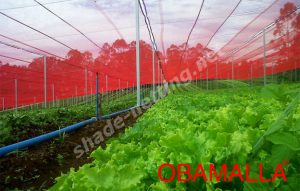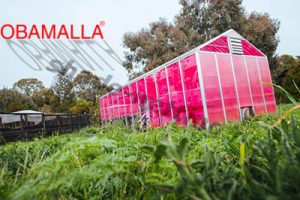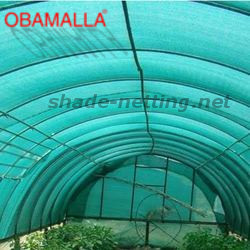Protect your agricultural produce using different colored shade netting
Shade netting made its entry in the agricultural arena around a decade ago in order to protect the crops from various natural elements such as harsh climate, pests etc. Recently, a new discovery was being made pertaining to the usage of colored shade netting or shade cloth (as it is also known as). According to a latest research, if you use colored shade netting as your garden fabric, it can help to improve the quality of your produce and also protect them from the attack of pests.
Earlier plantations were usually covered using tinted black shade netting. These shaded areas used to spread across plantations to protect the crops from winds or from the harsh solar radiation, especially during summers. These tinted black netting were also used to save irrigation water. As per the latest research carried out by the Volcani Institute, there are lots of advantages if you change the color of the shade netting.

The protection that the shade cloth provide avoid that the UV cause damage to your crops.
Research Findings on the Usage of Colored Shade Netting
While shade netting was originally designed primarily to protect the crops from natural elements, as per the latest research, if you change the color of the shade nets to red, white, yellow, or pearl, it also impacts the quality of your fruits and vegetables, their shelf life, their size, the level of eco-friendliness of your crops, and the duration of the ripening process of your produce.
The colors mentioned above helps to achieve the desired results, as they enable you to shape the wavelength of solar radiation, the type of solar lighting, its intensity, as well as the manner of its distribution.
Red shade netting helps to postpone the ripening duration of grapes and other fruits, while the pearl and white shade netting helps to fast track the ripening process. When a combination of colors was used in shade netting, various types of fruits such as peaches, apples, grapes, pears etc. significantly grew in size. In some cases it was observed that when a combination of colors was used in shade netting, the trees and plants consumed much less water and the color of the fruits also became more attractive.

The variation of colors provide many advantages for your crops.
According to the research findings, when yellow colored shade netting was used, it helped to cure infertility of the plants and also helped in rejuvenating the plants to a great extent. As part of the research, the yellow colored shades were placed over vineyards which were not producing much fruit. It was observed that when the vineyards were covered in yellow shade netting, the fertility of the plants returned and it save the planters from the pain of having to uproot their vineyards.
Initially, the researchers were concerned about the usage of yellow color, as this color is known to attract pests. But, when implemented, they realized that it not only increased the yield, but it also helped to keep the pests away from the plants.
Researchers found that when yellow shade netting was used, the number of insects which penetrated through the net was cut down to half when compared to the previously used black shade netting. With the usage of yellow colored shade netting, since the number of pests attacking the crops reduced, it also reduced the amount of chemical pesticides that needed to be used.
After these research findings were published, different colored shade netting have now made their entry into the agricultural market and has spread to various countries such as the United States, Spain, Italy, Australia, New Zealand, and Turkey.

Other way for the growth of your crops is combining the colors of the shade cloth.